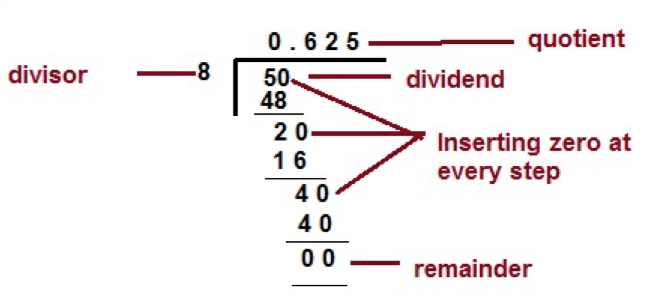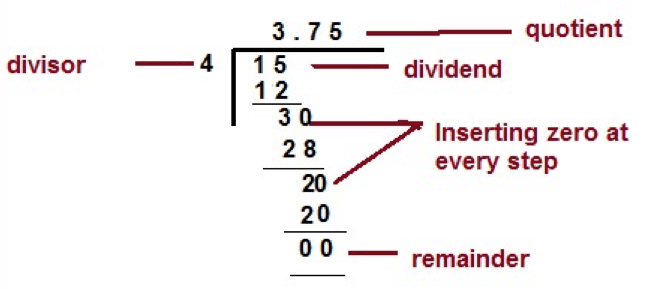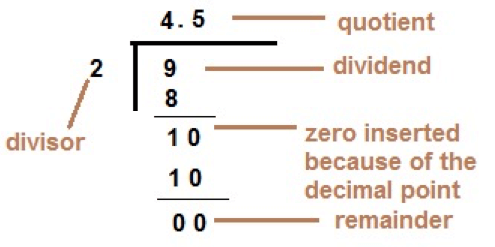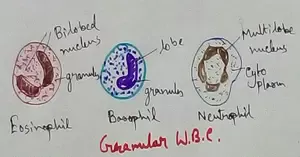Conversion of Fraction to Decimal Fraction
This topic will deal with conversion of fraction to decimal fraction. In order to do this we actually divide the numerator of the fraction by its denominator and the answer will be in decimals. This topic will illustrate conversion of proper, improper and mixed fraction into decimal fraction. Here are few examples to illustrate the same:
1. (Conversion of proper fraction into decimal fraction)
Divide 5/8 into decimal fraction
Answer: 0.625
Explanation:
In this example 5/8 is converted into decimal fraction. In this sum the numerator that is 5 is less than the denominator and hence it is conversion of proper fraction into decimal fraction.
In the first step 5 cannot be divided by 8 as the numerator is less than the denominator. Hence we need to put zero then we will place the decimal point in order to continue the division as there are no digits left in the dividend. Now with the decimal point one zero will be inserted at each step. Therefore, now we need to divide 50 by 8. 50 is not divisible by 8 but the nearest number is 48 that comes in 8’s table. Therefore, 8 multiplied by 6 is 48 with 2 as remainder. Now again zero will be added at this step to become 20. 8 multiplied by 2 is 16 with remainder 4. Again with another zero added at this step it will become 40. Now 8 multiplied by 5 is 40. Hence the answer is 0.625
2. (Conversion of improper fraction into decimal fraction)
Divide 15/4 into decimal fraction
Answer: 3.75
Explanation:
Here 15 is divided by 4 to get decimal fraction. The numerator 15 is greater than the denominator and hence it is an improper fraction.
In the first step 4 is multiplied with 3 to get 12 and 3 as remainder. Now we need to put decimal point in the as there are no digits left in the dividend. Now because of the decimal point 0 is inserted at each step so it makes 30. Now 4 multiplied by 7 is 28 with 2 as remainder. Now this 2 will become 20 as again another 0 is added. Now 4 multiplied by 5 is 20 with no remainder.
3. (Conversion of mixed fraction into decimal fraction)
Divide 1\(\frac{7}{2}\) into decimal fraction
In this sum first we need to change the mixed fraction into improper fraction.
(1 × 2 + 7)/ 2
= 9/2
Now this 9/2 is an improper fraction will need to be changed into decimal fraction
Answer: 4.5
Explanation:
Here as discussed earlier 1\(\frac{7}{2}\) is first changed into improper fraction and then we will divide to change it into decimal fraction. 2 multiplied by 4 is 8 with 1 as remainder then decimal point is added as there are no digits in the dividend. Now because of the decimal 0 is inserted which makes it 10. Now 2 multiplied by 5 is 10 with no remainder.
From Conversion of Fraction to Decimal Fraction to HOME PAGE
Recent Articles
-
Formed Elements of Blood | Erythrocytes | ESR |Leukocytes |Neutrophils
Jan 15, 26 01:25 AM
Formed elements formed elements are constitute about 45 % of blood afeias haematocrit value packed cell volume mostly of red blood corpuscles and are of 3 types- erythrocytes, leukocytes and blood pla… -
What Is Plasma? | Blood Plasma | Proteins | Nutrients | Cholesterol
Nov 07, 25 10:29 AM
Blood is a mobile fluid which is a connective tissue and is derived from the mesoderm like cell any other connective tissue. Colour of blood is reddish and that flows inside the blood vessels by means… -
Disorders of Respiratory System | Tuberculosis | Pleurisy | Emphysema
Oct 28, 25 11:39 PM
Tuberculosis is very common disease and is caused by a type of bacteria called Mycobacterium tuberculosis. This disease causes different trouble in the respiration and infection of several parts of th… -
Regulation of Respiration | Respiratory Centres | Inspiratory Area |
Oct 14, 25 12:13 AM
Respiratory Centre is the area that controls the rate of respiration and it is observed to be located in medulla oblongata and pons. Respiratory Centre has the following will dispersed components like… -
Explain Transport of Gases | External Respiration | Tissue Respiration
Oct 09, 25 11:35 PM
In humans gaseous exchange is completed in the following ways the steps are - External Respiration or Breathing - Breathing in false taking in of Oxygen and giving out of carbon dioxide in the body. M…









New! Comments
Have your say about what you just read! Leave me a comment in the box below.